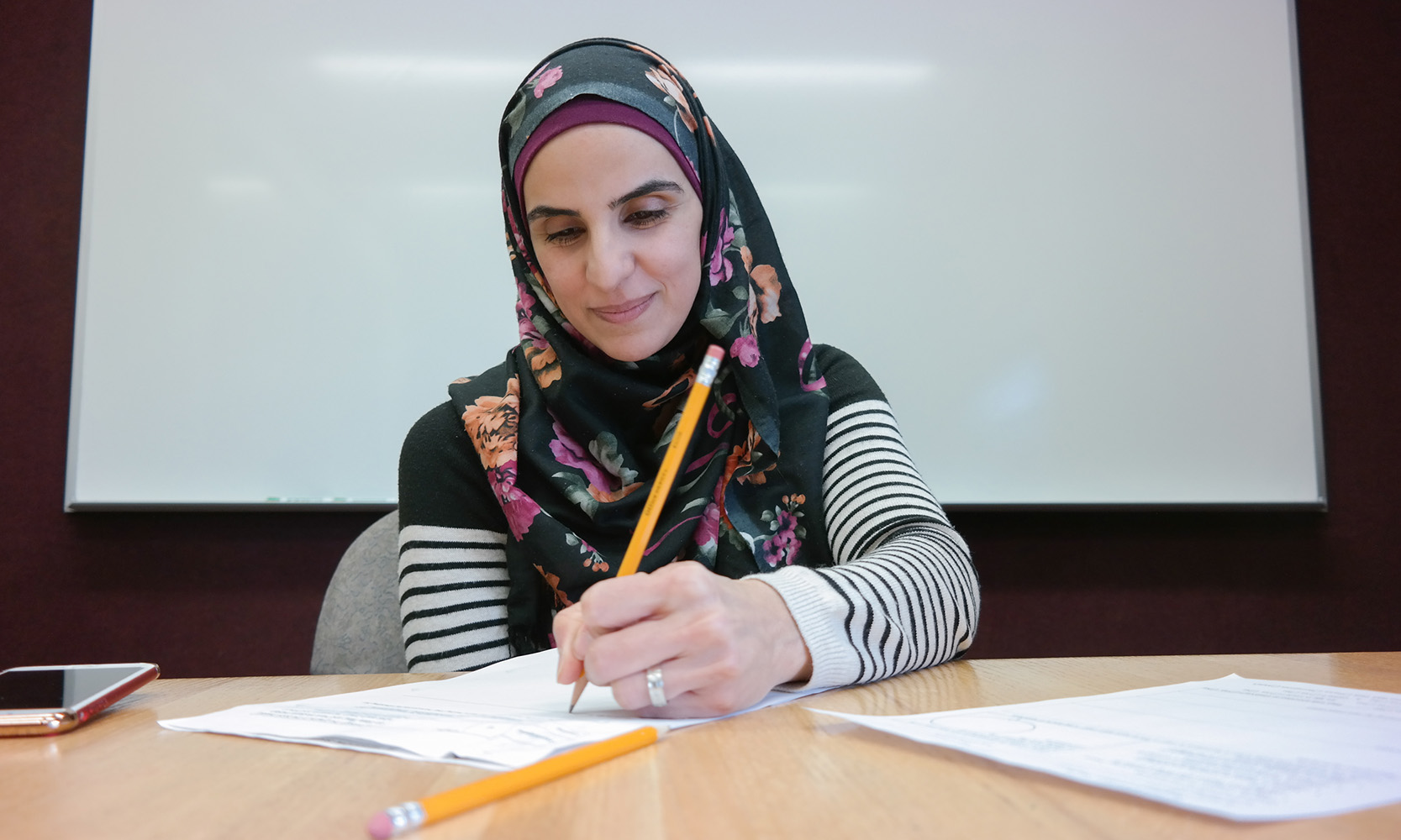
Student leaders in UM-Dearborn’s Supplemental Instruction (SI) program are used to getting confused for tutors and TAs, of which they are neither, and they’ll politely set you straight if you make the mistake. It’s an honest enough one to make. Like tutors, you’ll find them helping students who need a hand with a particularly tough topic. And in class, you’ll find them — like a TA — occupying a place that seems to philosophically put them somewhere between professor and student.
But SI leaders deserve their own place in the universe of learning assistants in part because their methodology is so distinct. Deb Roundtree, a lecturer in psychology and supervisor in UM-Dearborn’s Supplemental Instruction program, explained the model’s most basic building block is a study group, which is assigned to a particular section of a class but is organized more or less independently from it and its professor. Instead, the typically twice-a-week sessions are facilitated by an assigned Supplemental Instruction leader (SIL for short), who is usually a student who has already taken the course. The SILs sit in on the current class so they know exactly what the students are covering. Then, in study group, they help the students work through any material they’re finding particularly challenging.
It’s how the SILs do that, though, that’s a little different. For starters, SILs are definitely not supposed to give students answers, or even directly show them how to work through a problem. Instead, if a student asks an SI leader a question, they’re trained to “redirect” the students to try to figure it out themselves.
“So let’s say the student asks about how to do a chemistry problem,” explained Liz McDowell, director of the Science Learning Center who heads up SI for natural science classes. “The SI leader might say, ‘Well, what do you have in your notes about that?’ Or, ‘Does anyone else in the group remember anything about that from class?’”
Then, the SILs are trained to wait. Literally. Roundtree says they instruct leaders to allow up to 20 seconds for the students in the group to respond. The concept is that they’ll “feel the silence” — compelling someone in the group to break it with a proposed solution. “So the idea is not only that they learn the material, but they’re learning how to be better learners,” Roundtree said.
Andrew Mady, who worked as a SIL for three years and now mentors other SILs as a program supervisor, says embracing that silence can be one of the trickier things for new leaders to get the hang of. Over the years, he’s come up with different ways — many of which he’s now passing on to new SILs — to make that rhythm feel more natural. Ice breakers were a must for him to get a session going (his go-to was Two Truths and a Lie). And he would often design his own Jeopardy-style games, both to change up the format and test for comprehension — another core part of the SI method.
Jowan Nabha, who’s now in her second semester as an SI leader, says navigating the relationship you have with your professor can also require some experimentation. Some level of independence from the instructor is actually a big part of the SI culture: For example, SI leaders are not allowed to do any grading, proctoring of exams, or attendance taking. And how much you check in with your professor to, say, discuss what material to cover in study group, varies from class to class.
“You also have to figure out how much your professor wants you to interact during class,” Nabha said. “I’ll sometimes try to read the room, and if I see that the students look confused, but no one’s stepping up and asking questions, I’ll ask a question on their behalf. Some professors might find that really helpful, but others might just want you to hang back.”
Amidst all this nuance, one absolute in the SI universe seems to be its results: Roundtree said they’ve consistently found students who attend five or more sessions average grades that are a half to a full letter grade better than their peers. Going forward, she and McDowell are working on compiling other types of data that could give them new insights into the program, including whether it’s effectively reaching students from traditionally underserved communities.
One other big frontier for SI at UM-Dearborn: With more classes moving online and packed student schedules, some SI leaders are starting to experiment with moving study sessions to virtual platforms like Google Hangouts. The results have been good so far. And that, Roundtree said, could become an important new way to bring this long-running program to even more students.
Learn more about the SI programs available through the College of Arts, Sciences, and Letters and the College of Business.



